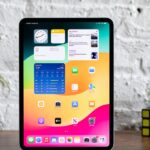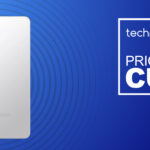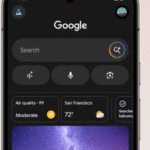On today’s You Asked: What’s to come with the new Slate Truck and its potential availability? Is it worth the hype? Why does it feel like smartphone design and innovation has stalled recently? And why do directors think that ultra wide 21:9 is a good ratio for movies?
Slate Truck breakdown with John McCann
Some of you have been in touch to ask about the availability of the new Slate Truck. I’ll go through the preorder process in a moment, but first, let’s get everyone up to speed on this newly unveiled EV. What is it? What makes it stand out? And why is it generating so much buzz?
This is being touted as a sub-$20,000 electric truck after government incentives, and you’ll be able to customize it to your heart’s content. It stands out not so much for what it offers, but for what it doesn’t offer as standard. There’s just one trim and one paint color. No touchscreen, no stereo, no Bluetooth, no electric windows.
So, what do you get? There are two seats. There’s a five-meter bed, good for payloads up to 1,400 pounds. There’s AC, steel wheels, and hand-cranked windows, plus all the standard driver safety assists you’d expect from a modern vehicle. There’s a rear-mounted electric motor, a roomy frunk, and a battery rated for about 150 miles, according to Slate.
That isn’t great in the world of EV range, but a larger battery will be available to push that figure up to a more reasonable 240 miles. That bigger battery is just one of over 100 add-ons Slate is making available. These will be offered not just at the point of purchase but also at any time during your ownership, allowing you to swap and upgrade as your needs evolve.
Want to add a splash of color? Check out the vast range of vinyl wraps you can apply and remove from the truck at will. There’s also an SUV upgrade kit that converts your two-seater truck into a five-seater car. Inside, infotainment is strictly “bring your own device.” There’s no touchscreen, no built-in CarPlay, not even a stereo. Instead, you get a universal phone mount and a few USB ports. You can also add holders for a tablet if you want a bigger display, and a Bluetooth speaker if you want to listen to music while out for a drive.

All of this is genuinely intriguing. Slate is doing something very different from what traditional carmakers offer. And for anyone into DIY car customization and looking for a low-cost entry into the EV world, the Slate Truck is worth considering. The ability to adapt your truck as your life changes is a compelling hook, and it will be fascinating to see how this plays out.
You can reserve your Slate Truck online now for just $50 down. That amount is fully refundable if you change your mind. As for when the truck will start showing up in driveways, there’s no firm date yet, but it is expected to arrive sometime next year.
Mobile tech talk with Gareth Beavis
Question from Christopher John: Hi team, I am weighing my options between Samsung Ultra Tab 10 vs Red Magic Tablet for both productivity and gaming entertainment. Which one will give me value for my money? Thanks. Watching your channel from Trinidad.
This is a great question because tablets right now are serving both gaming and productivity needs really well. Let’s start with the Galaxy Tab S10 Ultra. First off, it’s a very expensive device—over $1,000, and sometimes even $1,200—but it comes with some strong productivity features.

One thing I’ve always been impressed with is Samsung DeX. In the early days, DeX didn’t work very well, but it has improved a lot. You can cast to multiple screens, multitask with multi-windows, and the included S Pen is a real bonus. Unlike the Apple Pencil, which is sold separately, it comes in the box. You can sketch, apply filters, and experiment with artistic styles.
The performance is solid. It has a MediaTek Dimensity chipset, which did not slow things down in our benchmarks. The huge 14-inch screen is not the most portable, but it offers plenty of space for multitasking and sketching.
If you’re watching sports or working with multiple windows, it performs well. For word processing, background tasks, or even video editing, it’s a powerful device.
Now, if you look at the ZTE, it is clearly a gaming-first device. It has thermal cooling, low screen latency, and a high refresh rate, which makes inputs very responsive. You can cast it to a larger screen, which helps since its LCD display doesn’t have the inky blacks or clarity of Samsung’s AMOLED.

But if you’re not concerned about that, or you plan to cast anyway, the ZTE works great as a mobile console. It’s fast, has great aesthetics, and is much more affordable.
In terms of value for money, I’d say the ZTE Red Magic Nova comes out ahead. But it’s important to read the reviews, as these two devices go in very different directions. If you need S Pen productivity, the Samsung is the better choice, though it comes at a higher price. If you prioritize gaming and can live with more limited productivity, the ZTE is a solid pick.
Question from from @Talex-jb8bp: What are you most excited about in new phones?
This one’s easy. A few years ago, I got a bit bored with phones. They all started to look and feel similar—rectangular blocks with flat screens, doing essentially the same things. You couldn’t really buy a bad phone anymore. That made reviews a bit dull compared to the early days when we had clear one-star and five-star devices.
But what still excites me? Foldables.

Yes, they’ve been around a while, but I’ve followed rollable and foldable displays even before becoming a tech journalist. And only now do I feel like we’re reaching an exciting turning point, especially with trifold devices.
Huawei showed us a three-screen fold-out device. That’s where things start to get really interesting. If a smartphone can truly turn into a tablet, we’re crossing into a sci-fi future. Only now it’s real.
There are still ways to differentiate these devices. One of the things I’m most excited about is foldable phones. That might sound obvious, since we’ve had them for a while, but I’ve been following this space even before I became a tech journalist. I was looking at rollable displays in more of a B2B context, and the excitement around them has been alive for 20 years.
I think we’ve finally, and I mean finally, gotten to the point where foldable phones are actually becoming exciting. That’s largely because of the trifold devices that are emerging. Huawei introduced a model last year with three screens folding out. That’s where things get exciting for me. If you can truly turn a smartphone into a tablet, that’s when we enter the next stage. It once felt like science fiction, but now it is becoming real.

Of course, there are still things that need to improve.
The creases—everyone says they’re getting better—but they’re still not good enough for me. They need to disappear completely. That way, it feels like you’re going from a Galaxy S25 to a Galaxy Tab seamlessly. That would be amazing.
And the potential to go from one small, powerful smartphone, which on its own is already decent, to something that folds out into a whole other class of device? That’s where it gets really exciting.
Based on questions from our Instagram community: Has smartphone design innovation stalled?
Now, this comes in the context of the iPhone 17, which is being rumored as looking very much like the Google Pixel. I’d say yes—I think smartphone innovation, especially when it comes to design, has stalled. I’d say around five or six years ago, things started to become quite similar.

I’m not saying it’s completely identikit. You can still see some interesting ideas, especially from some of the Chinese smartphone manufacturers doing clever things with camera arrays that give a real visual identity. And those do look very different. But Samsung, Apple, and Google are all doing more or less the same thing. So yeah, I think things are starting to get quite homogenized.
That’s not to say they’re exactly the same. If you line them up, you can definitely tell which is which. But I think the days of owning a smartphone just because of how it looked—I’m talking about the HTC era, or the early iPhone days, and even some of those early Samsung and LG phones—those were iconic, and they looked very different.
That has changed. I think the homogenized rectangle is really here to stay.

Is that a problem? I don’t think so. I’m actually quite excited about the new trend toward thinner devices. If the iPhone 17 turns out to be as slim as rumored, I think it’ll be really cool. Holding a thin phone just feels tangibly different from the slightly thicker ones we’ve gotten used to. Even though none of them are thick by old standards, that extra bit of slimness is noticeable.
We’re seeing this trend with Samsung as well, and multiple Chinese brands are pushing for it too. I think that’s really cool.
Home entertainment questions with Chris Hagan
Question from @Jeff1960G: What would be a good soundbar for an 18×15 bedroom? I am new to the soundbar experience and want a good sound but under $600. Thank you.
Jeff, I feel you—especially on the under-$600 part. Fortunately, soundbars not only come in a variety of shapes with an even larger variety of features, but they’re also not as expensive as you might think and still pack a ton of quality.
To keep things simple, I’m going to give you a few options since I don’t know your exact room setup. Hopefully, these spark some ideas you may not have considered.

The first is the Bose Smart Soundbar, and it just straight-up delivers. It checks every box I’d want in a bedroom: not too large, should fit easily under most TVs, and of course, it’s Bose—it brings the audio fidelity the brand is known for. It supports Dolby Atmos and uses their TrueSpace technology, which adds an immersive layer to whatever content you’re watching.
But most importantly, it handles what many people care about most: dialogue. There’s an AI dialogue mode that clears up those tough-to-hear conversations without overpowering or degrading the rest of the audio. That’s especially helpful if, for example, your bed is on the opposite wall from the TV or soundbar, and you still want to hear every detail of your favorite show. And it’s $500, so it fits your budget with a bit of room to spare.
Now, if you’re looking to save a bit more and have the setup to support it, the Polk MagniFi Mini AX retails for $500—but at the time of publishing this video, it’s on sale for $400. The soundbar is very compact, supports both Dolby Atmos and DTS audio, and features Polk’s VoiceAdjust, which enhances dialogue clarity. The standout feature? It comes with a wireless subwoofer. So if you’re after extra bass to give your bedroom more of a home theater feel, this could be the one.

Personally, I don’t know if I’d want a subwoofer in that space—but hey, it might be fun.
If you’re leaning toward something a bit more traditional, I’ll also throw in the Klipsch Flexus Core 300. It’s similarly priced—retailing for $500 and currently on sale for $400. It delivers big sound as an all-in-one unit and, like the others, supports Dolby Atmos. Klipsch highlights its dedicated horn-loaded tweeter, which enhances vocal clarity. Clearly, dialogue is a key focus.
Hope that helps, Jeff. Let us know which one you end up choosing.
Question from @andyhoughton1068: What are your thoughts on streaming boxes? And what is the best streaming box to buy?
Thanks for this question, Andy. This is another one that comes with more options than you probably care to hear me list, but I’ll give you my top three.
Let’s start with your first question: my thoughts on streaming boxes. In short, they’re awesome—especially when configured correctly. They’re pretty plug-and-play, but if you’re curious about the deeper settings, we have lots of videos and guides on the channel and DigitalTrends.com that dive into the details.

Streaming boxes are especially helpful when you have a preferred operating system like Google TV, Apple TV, or Amazon Fire TV. They let you choose the experience you want, rather than relying on the built-in software from your TV. And if it’s not a newer or higher-end TV, the streaming box might actually run faster than your TV’s OS.
Plus, some TVs let you customize which HDMI input loads when the TV turns on. That way, with your preferred streaming box, you can skip the TV’s native interface entirely if you want.
My top pick would be the Google TV streamer—or for a bit less, the Google Chromecast with Google TV—mainly because of how easy it is to set up and use. One account houses your apps, manages logins, and keeps things seamless. The layout is clean and works well with a wide variety of apps.
The streamer is faster and smoother than the Chromecast when it comes to navigation, and it offers more storage. It’s a great main-room setup, which is why most people tend to prefer it over the Chromecast.

Next up, having used it for a few years myself, I’m also a fan of Roku’s lineup. And as a matter of fact, they just released some new products. The new Streaming Stick Plus is their top option for 4K streaming and only builds on what’s already been a reliable choice for performance and ease of use. Also worth noting: it’s just $40.
That said, both the Google and Roku options I mentioned can include ads on the home screen. Welcome to 2025. So if that bothers you, the Apple TV 4K is worth considering. Just keep in mind that a new Apple TV is expected sometime in 2025. If you lean that way, it’s worth checking to make sure you’re getting the latest tech—especially if you’re buying near the end of the current model’s life cycle.
Question from @6cmcnc6: Remember when we all use to complain about black bars? Why do director think 21:9 is a good aspect ratio now? No one’s buying ultra wide monitors just to watch movies.
Well, my friend, I see your logic. But riddle me this, Batman: do you think directors are making movies for theaters or for home viewing on God-knows-what device?
Spoiler alert: it’s not the latter. Many directors and cinematographers have a specific vision for how their movie should be seen—on the big screen, in a theater. Especially now, with so many extravagant screen options, movies can play better and feel more immersive in a wide format. Or sometimes, that’s just how the creators intended the film to be presented.

Take a recent absolute masterpiece like Sinners, for example. Director Ryan Coogler and director of photography Autumn Durald Arkapaw shot it on film to be shown in ultrawide, tall IMAX, and regular formats, among others. They even took the time to show how each version offers a unique viewing experience. It’s really cool to hear him explain it, if you haven’t already.
Other cinematic creators shoot their films based on how they want them to look on the big screen, and once those films hit streaming services, everyone else just has to deal with it unless it’s been specifically adapted. Often, it’s out of these creators’ hands when it comes to how their work is delivered across the wide variety of streaming boxes, TVs, monitors, and other devices that all support different formats.

Speaking of which: for shows and movies that are created specifically for streaming—especially those with big budgets from Netflix, Disney+, Prime, and Max—much of that content is shot with the expectation that it will be viewed on a standard 16:9 TV. So it makes sense to use a 1.77 or 1.78:1 ratio, and it often looks phenomenal.
These are premium productions, so when movies use an ultrawide aspect ratio for theatrical release, it’s one more way to make them stand out. And to answer your question directly: directors have long favored the 21:9 format—known in film as 2.35:1 or 2.40:1.
You can check IMDb for a long list of movies shot this way, including The Matrix trilogy, Forrest Gump, Indiana Jones, the Alien and Die Hard franchises—the list goes on.
Read the full article here














